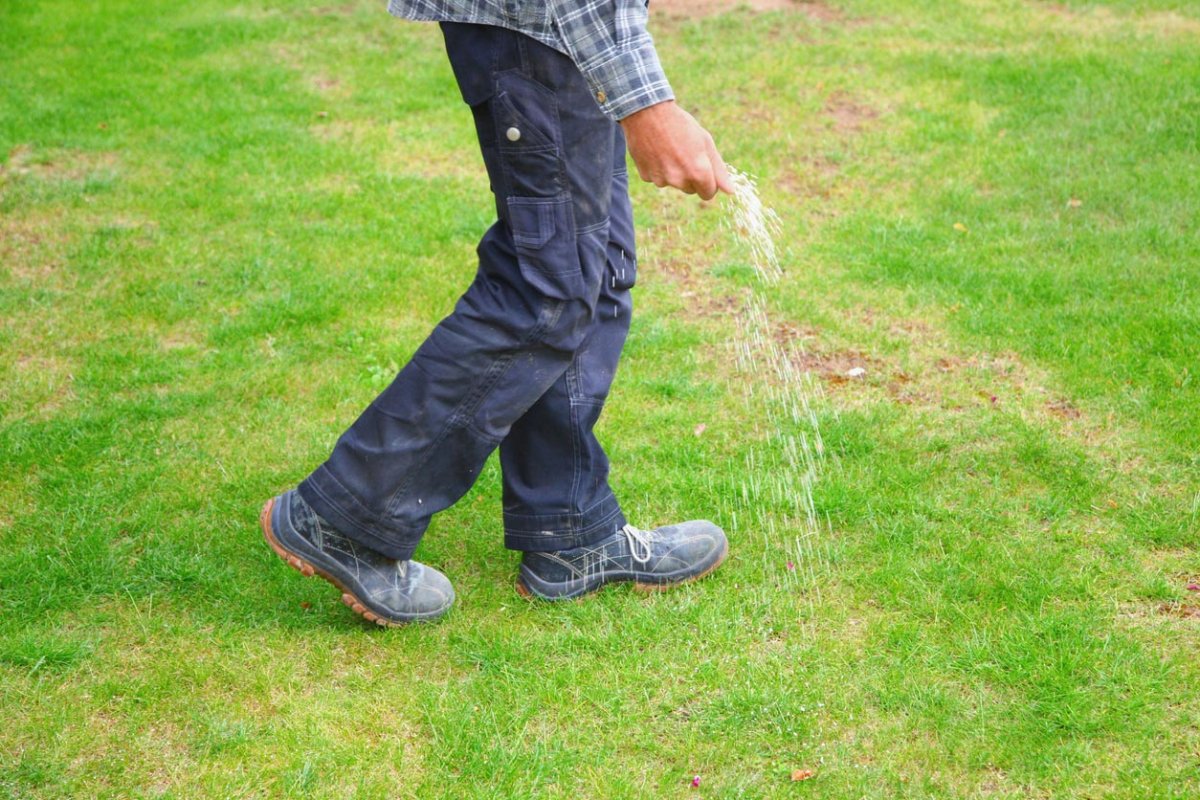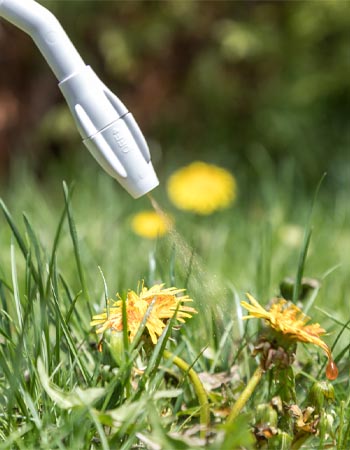

We may earn revenue from the products available on this page and participate in affiliate programs. Learn More ›
Welcome to Ask a Pro! Every month, we’ll take your questions about home improvement, DIY, lawn and garden, and homeownership and answer them with the help of professionals. Our experts are vetted and verified—and they’re eager to share their knowledge.
Last month, BobVila.com readers submitted lawn and garden questions on Facebook and Instagram, and via our newsletter. We hand-picked our favorites, and tapped The Pest and Lawn Ginja—to answer some of them. In this Ask a Pro column, the Pest and Lawn Ginja helps our readers control weeds in a walkway, get rid of fungus in the lawn, how to get rid of moles, and more.
Meet the Expert: The Pest and Lawn Ginja
The Pest and Lawn Ginja is known for solving lawn and pest problems, big or small. He has been a licensed technician since 2004 and owned a pest control and lawn care company for over 15 years. He has also developed his own five-step approach for solving any lawn problem.
Check out the Pest and Lawn Ginja’s YouTube page and website.
- Want more lawn and garden advice? Sign up for our newsletters!
Does the old adage “feed in the fall, seed in the spring” still hold true? — Jerry via the newsletter

Ginja’s Advice: The answer to this question all depends on where you live and what you’re planting. But overall, I feel this old adage is actually commonly false. If we are planting grass, seeding in the late summer or early fall is best, then feeding the grass every 4 weeks during the growing season will give the best results.
Ultimately when it comes to “feeding,” it will all depend on what the soil already has in it versus what the plant needs. Perform a simple soil test, which will show the nutrient content of the soil.
I planted grass seed throughout my yard in bare spots, only not the same as what was there. How do I go about switching it out to match my tall fescue grass? — Linda via the newsletter
Ginja’s Advice: The best option is to dig out the grass that you planted. You’ll need to dig deep and be sure to get below all the roots. Then you’ll need some topsoil to fill in the hole, followed by seeding or sodding the area with the desired grass to match.
- See more about what causes bare spots in the lawn.
What is the best material to put between pavers to control weeds on a walkway? — Deborah via the newsletter
Ginja’s Advice: The best materials to place between pavers to prevent weeds would be crushed asphalt road base or polymeric sand with a high salt content. To control weeds that have already appeared, you can use a nonselective organic herbicide. One I usually stray away from is mixing baking soda with vinegar. I commonly avoid this option because it can and often will sterilize the soil. But in your case this is exactly what we want to do. Mix one part baking soda with two parts white vinegar in a spray bottle. Add a squirt of dish soap after the mixture stops bubbling. Shake the bottle, then spray the leaves of the weeds. Other organic control methods include spot-treating the weeds with boiling water. Or, use a pressure washer through the cracks and crevices as the weeds begin to show, or burn them (safely).
I love my shade trees but grass doesn’t grow under them. What can I plant (or do)? — Deirdre via the newsletter
Ginja’s Advice: Most grass types need 4 to 6 hours of direct sunlight, even if they are considered shade varieties. With that said, my favorite thing to do in these areas is to cut a border edge around the trees and apply chunky mulch. If the area is large, a few chairs and a small table is a nice touch to liven the area and give it some purpose.
- Want more of the Pest and Lawn Ginja’s advice? Check out reader questions he answered in our last Ask a Pro column.
I have a sunny backyard and the grass is good, but I have been finding a lot of fungus growing in the grass. I have never had this problem until last year, and I treated it with a spray that I found at Home Depot. It didn’t solve the problem. Help! — Dorothy via the newsletter
Ginja’s Advice: Hi Dorothy. Fungus can come in all different forms. Sometimes it’s as simple as a mushroom popping up, and other times it’s black dots growing on the blades of the grass.
The first step is identifying what kind of fungus we have. Oftentimes this question revolves around mushrooms. The simple solution is to dial back your watering by a few minutes per round and then test that for a week.
If we’re talking about other types of fungus, it’s important to remember that the root cause of a fungus is excess water. We can control fungus organically by slightly dehydrating the area. If you have a sprinkler system, try turning the water off for 4 to 7 days, just to the point where the lawn is starting to look tired. This can help deactivate many types of fungus, and then you can resume your normal watering. But ultimately, we want to know what causation is, although overwatering is commonly the culprit. A soil test will reveal if you have nutrient deficiencies that may be causing the situation.

Want more advice?
We’re tackling pest and wildlife control problems in June. Have a question? Let us know by filling out this form!
My lawn is mostly sand and has brown spots and bare spots. Grass doesn’t grow very tall. Is it fungus or insects? — James via the newsletter
Ginja’s Advice: From my experience, when people say the lawn is brown, it commonly refers to areas that lack water. Sand doesn’t have the capacity to hold water well over a long period of time. For people with sandy lawns, my recommendation is to water 5 to 7 days per week.
With that said, it’s important to do what we call a water output cup test to test your water coverage. This is done by placing out a series of like-size cups in a grid pattern throughout the zone or section in question in both the green areas and the brown areas. Run a 20-minute cycle and then measure how much water you have in each cup. If cups A, B, and C are all catching 0.25 inches, cups D and E are catching 0.15 inches, and cups F, G, and H are catching 0.25 inches, then we know we need to make some adjustments to cups D and E. Then, rerun the test. Slowtheflow.org should have a chart indicating how many inches of water per week is recommended to maintain a healthy lawn in your area.
How do I keep chipmunks, gophers, and moles out of my yard? I’ve tried everything. I can control the moles, but not the chipmunks and gophers. — Linda via the newsletter
Ginja’s Advice: Chipmunks are difficult, considering the nature of the animal. It walks, runs, jumps, and climbs trees. Eliminating any food source is the most recommended option, but it’s never a guarantee.
As for gophers and moles, I prefer to use an organic repellent called MoleMax. But it needs to be applied every 4 to 8 weeks for best results. When applied regularly it helps change the taste of the roots and soil that the rodents are passing through. Keep in mind that this is for repelling said rodents, not eliminating them.
Some queries have been edited for clarity.
